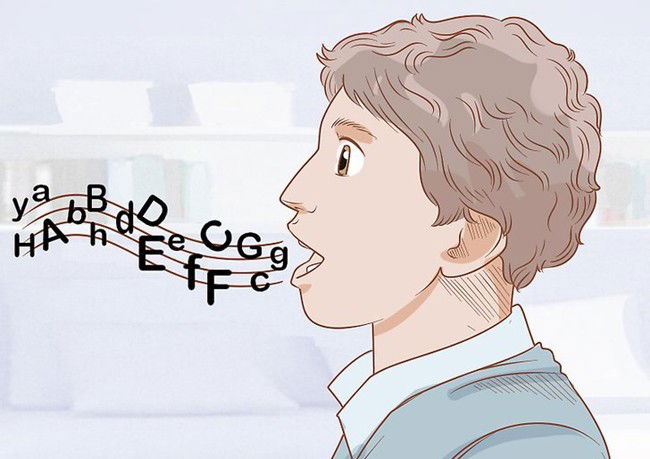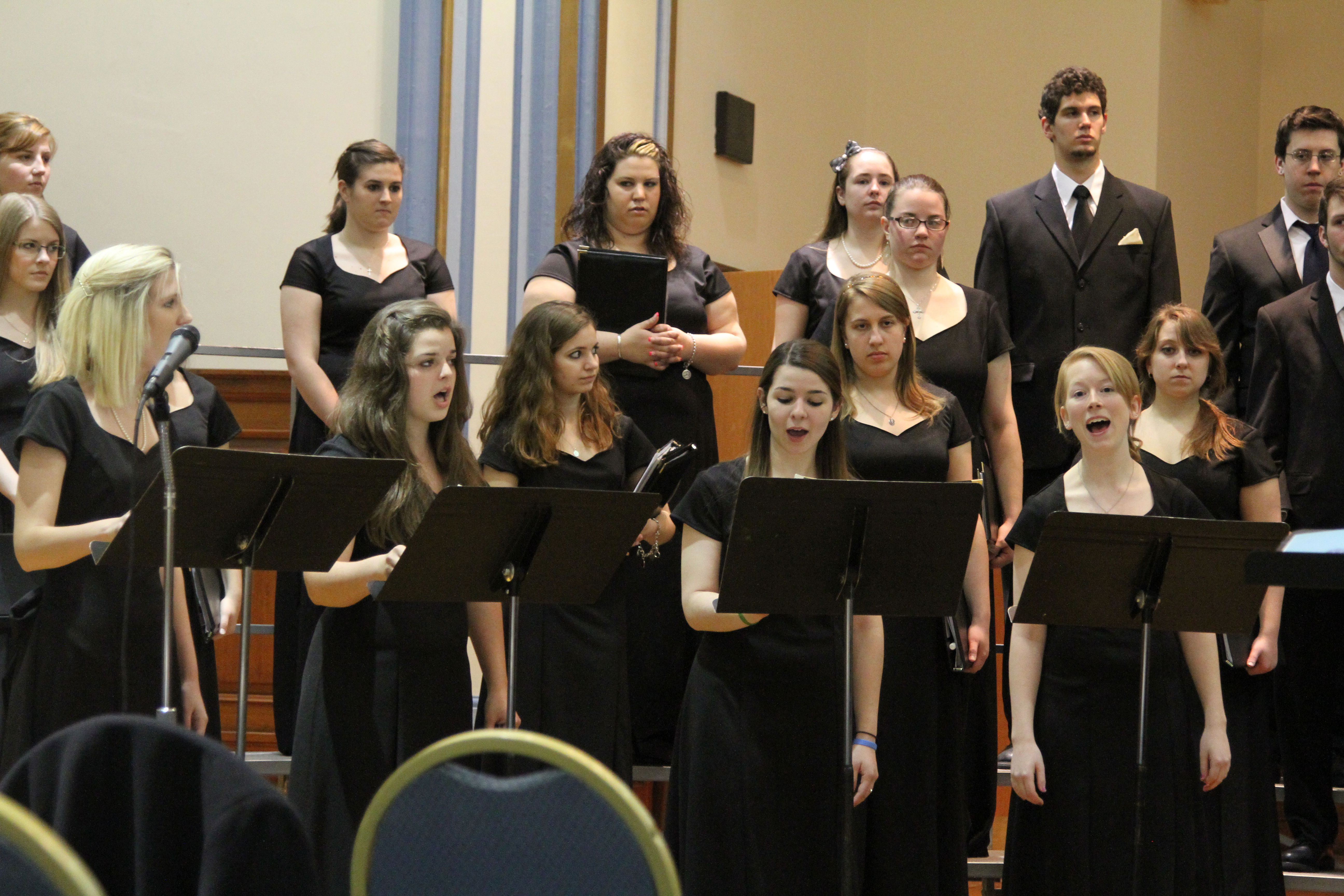How a Choral Director Can Assess the Quality of a Choral Group

A skilled choral director can evaluate the quality of a choir by observing key musical, technical, and personal aspects of their participation, rehearsal, and performance. A great choir is not just about having strong individual voices but about blending, balance, and discipline. In this article, we’ll be looking at some of the essential ways a director can tell how good a choral group is. First, there will be the goal, followed by some constructive steps with which you can achieve those goals, in relative order.

1. GOAL - Blend and Balance – One of the most important signs of a good choir is a unified sound. A choir should not sound like a collection of soloists but rather a single, harmonious voice. These are all related, but their unique qualities are worth mentioning. A director listens for:
- Smooth transitions between voice parts (soprano, alto, tenor, bass). Occasionally, there is a desired effect that points up some contrived differences in vocal parts, but normally, a choir should have a smooth sound.
- No one voice dominating the others, unless, of course, the music calls for a solo.
- A well-balanced mix where no section is overpowering. Bellowing altos are not inspiring.
STEPS TO TAKE –
* The first thing you would have to do to achieve this goal may take a while. You would have to examine each voice individually by having each person sing a set scale, sing a set of notes to determine range, perform a dynamics range test, sing certain words or sounds to determine how each singer produces a variety of vowels sounds. If this is an entry level choral group, such as a seventh or ninth grade ensemble, this might be able to be done during a “meet your teacher” or “freshman orientation” time. Then, it would be quite to your benefit to keep such notes, since many singers who start in early grades often continue through graduation. If this is a community choral group, such assessments may have to be made by wandering through the group as they sing a set piece to see if there are any voices that have an unusual characteristic.
* Once you have determined the characteristics of each voice, you can arrange the group to be as homogenous as possible, with no two singers with the same vocal type next to each other.
* The last thing is to include instruction about smoothing out one’s voice to fit the rest of the group. You may also want to try to explain the particular sound you desire.
2. GOAL - Intonation and Pitch Accuracy - A strong choral group sings in tune. A director will check:
If the choir stays on pitch throughout the piece. Whether singers adjust naturally when harmonizing. If the group can sing a Cappella without drifting off-key.
STEPS TO TAKE –
- Unless there is an audition requirement to join the choir, there’s no way of keeping out those who enjoy singing, but aren’t especially good at it. Most, if not all, of the music that directors will choose for most non-auditioned groups sing will have a piano or other accompaniment. This will help keep the group on key, especially if the accompaniment plays the parts instead of a continuo or separate accompaniment part.
- Harmony can be tricky, especially when it’s extremely close. Often, it works well for the director to have the sections that sing the harmony parts to learn them as individual melodies in themselves. Then, when they are all sung together, singers can make those miniscule adjustments in the way they sing their parts.
- No matter what kind of group you have, it’s always important to do some ear training exercises. That way, you can raise the level of competency in the group from wherever they are to the next level, even if it’s in very small steps. There are myriad ways to do this, but that will have to be addressed in a different article.

3. GOAL - Diction and Clarity - Good choirs articulate words clearly so that the message of the song is understood. The director will assess:
- Pronunciation of consonants and vowels.
- Uniformity in how words are shaped across the choir.
- Whether lyrics can be understood without straining to hear.
STEPS TO TAKE –
- There is a variety of “proper” ways to sing consonant, vowels, diphthongs, etc. Most choral directors “inherit” their preferences from their experiences and / or training. Some gospel choirs will hold and “M” or and “N” sound at the end of a word to obtain a warm sound. Many more seriously trained directors will hold the vowel sound before the “M” or “N” and sing those consonants at the very end of the note. Both ways can sound good; it may depend on the preference of the listener. The important thing is that the pronunciation enables the listener to understand what is being sung.
- Words must also be pronounced consistently. Each pronunciation technique must be used the same way all the time, at least within a song. There may be times when a concert program includes songs from different times or places and that require a different approach to pronunciation for each one.
- The most common way for words to be understood, of course, is a clear and consistent pronunciation ad enunciation of each word and group of words. It also involves the choir, or its sections, to breathe at the same time, in a way that makes the verbal phrases sound natural. However, sometimes it takes some subtle nuances such as an inferred raising or lowering of the voice, shortening a note or two to add sufficient emphasis to a word or phrase, or accenting a note or two to ensure that the meaning is clear.
4. GOAL - Rhythmic Precision
A strong choir keeps a steady tempo and follows the director’s cues well. A director will notice:
- If singers stay in sync with the beat.
- How well the group handles tempo changes.
- Whether there is hesitation or dragging in difficult passages.
STEPS TO TAKE –
- Bach, Handel, and Mozart all loved a good, steady beat. They very probably would have liked some truly creative rock music. Brahms and Beethoven often loved the sense of rubato. However, in either style, the beat had to be consistent, either in its steadiness or in its slowing and quickening. And, all of the choir members must be performing the beat the same way.
- Part of the secret to well-performed tempo changes is in the rehearsing of them. (See the section on Rehearsal technique at the end of the article.) There is a certain “feel” that develops after a choral group has rehearsed tempo changes well. In some cases, the ensemble could do quite well without the conductor’s guidance, but it’s always good to have one.
- Sometimes, especially among less experienced performers, there is a tendency for them to slow down somewhat when faced with a difficult passage, whether it’s odd intervals, chords, rhythms, or other musical oddities. A good conductor will have rehearsed these parts well enough so that the group can sing them without any hesitation.

5. GOAL – Dynamic Control
A skilled choir sings with expression and contrast. A director will listen for:
- Variations in volume that enhance the meaning of the song.
- Appropriate transitions between soft and loud sections.
- Emotional depth in the way the choir interprets the music.
STEPS TO TAKE –
- Most, if not all, modern choral music has dynamic marking written into it. Very old works don’t have such markings, and it’s up to the conductor to interpret the work so that appropriate dynamics can be used. The choir must also be able to sense and perform these interpretations well.
- For most choral music, changes in dynamics can be relatively tame. That’s not to say that they can’t be extreme, but they often occur as a crescendo or decrescendo. The skilled conductor has communicated to the choir where and how to sing these dynamic changes. If a crescendo starts too soon, it can be hard to build to the next dynamic level, particularly if the changes in levels aren’t wide. If it starts too late, it can sound more “sudden” than it should.
- There is more to performing various dynamics than simple loudness or softness. There is a somewhat indefinable intensity, even in soft passages, that a good choir will convey to its listeners. This can be difficult for a director to convey; more often than not, it must be something that the individual singers bring to the ensemble.
6. GOAL – Breath Support and Vocal Technique
A well-trained choir sings with proper breath control and vocal technique. The director will evaluate:
- Whether singers use deep, controlled breathing.
- If there is strain or tension in their voices.
- How well they sustain long phrases without losing power.
STEPS TO TAKE –
- The main thing to watch for is the movement of the stomachs in the singers. The diaphragm must be allowed to move, and this cannot happen with the stomach moving in and out. Raising the shoulders does nothing for good breathing.
- A relaxed voice can be both heard and observed. A relaxed voice has no tension to its sound. It also can be seen in the relaxed throat of the singers.
- Long phrases of 15 to 30 seconds is possible in one breath. That takes a lot of breathing practice. When staggered breathing is required, the choir must have practiced its timing for this to avoid gaps in the long notes.

7. GOAL - Attentiveness and Responsiveness
A disciplined choir watches the director closely and follows instructions immediately. A director looks for:
- Eye contact with the conductor.
- Quick responses to changes in dynamics or tempo.
- A unified sense of musicality and expression.
STEPS TO TAKE –
- Lack of eye contact with the conductor is fairly easy to spot, although what might look like a singer making eye contact really may be the singer looking “through” the conductor. A good way to counter such wayward eye movement would be for the conductor to make a nearly imperceptible direction that only those truly watching for it would be able to notice and follow.
- Responding well to changes in tempo and dynamics is another thing that must be rehearsed well, and rehearsed consistently. A good test of whether this has been done well would be for the conductor to stop conducting through the passage to see how well the choir can perform it.
- Even though it’s not good practice for a singer to have extreme facial expressions while singing, it is possible for the choir to have expressions that can convey the general mood of the song, whether pleasant, sad, or even angry. However, this must be consistent. It wouldn’t do for a few basses to be grinning at an inside joke while the rest of the choir has a somber look.
8. GOAL - Stage Presence and Confidence
A choir’s performance is not just about sound; their posture and presence also matter. A director will observe:
- If the singers stand or sit with good posture.
- Whether they engage with the audience or seem distracted.
- Confidence in their facial expressions and body language.
STEPS TO TAKE –
- Practicing good posture is imperative. Not only does it help the singers to perform better, it helps them to feel better longer. An hour long concert can be tough on singers’ spines and legs if they stand improperly.
- Mention was made earlier about how important it is for the choir to maintain eye contact with the conductor. However, there probably are places in the song where the choir can break eye contact with the conductor and engage the audience with a long glance. This engagement may need to be pre-arranged so that the conductor is aware of what the choir is doing.
- In pop music of all sorts, such confidence is called stage presence. It is usually very subdued, unless the choral group is a show choir. Singers must appear to believe what they are singing. That’s why it’s very important a choral director to get input from the singers about the lyrics they will be singing. It would be impossible for me to sing John Lennon’s “Imagine”, no matter how well it was arranged.
Conclusion A good choral director can tell how strong a choir is by carefully listening and watching for these key qualities. A great choir blends well, stays on pitch, follows direction, and sings with confidence and emotion. With proper training, dedication, and teamwork, any choral group can grow into an excellent ensemble.
Salt Cellar Creations understands the beauty and power that a Choral Group can convey and the challenge that choral directors face in choosing the best music for their ensemble. SCC has a growing library of original works and arrangements to help meet the needs of choral teachers and directors Find out more about what Salt Cellar Creations has to offer for Choral Groups HERE. Explore the available music HERE.
SCC can also compose an original piece for you or do a custom arrangement for you to allow you to showcase your group. There are two ways that this can be done; one is much more affordable than the other. CONTACT US for more information. And SCC is always looking for ideas of pieces to arrange or suggestions for original pieces.
We have sold music not only in the US but in Canada, the United Kingdom, France, Australia, and New Zealand, Austria, and Germany. Please visit the WEBSITE or CONTACT US to let us know what we can do for you!
Rehearsal Techniques
I. The director should have a real good idea of how the piece should sound.
II. Sing the piece all the way through once, unless a major train wreck happens.
III. Once the piece is sung once, the director can determine where the weak places are.
IV. Then the bracketing technique described below can be used to iron out weak places.
A. First, identify the places that need work.
B. It may be necessary to break this section into smaller bits (smaller groups of instruments) to determine where the problem really is.
1. You may need to sing it slower than normal to hear where something is going wrong.
2. Almost always, you should have each section sing its part by itself. This not only helps to iron out the rough spots, but it lets the others sections hear what else is going on in the music.
C. Sing the section you just worked on through until it’s sung correctly three times. Less than that could be an accident.
D. Once you sing it three times correctly, sing the spot starting a measure or two before and continuing a measure or two after. Do this until you’ve done it three times correctly.
E. Then sing it again, starting at the beginning of the musical section (verse, chorus etc.) and continuing to the end. Repeat three times correctly.
F. Then, do the whole song three times correctly.
G. If you’ve got more than one rough spot, smooth them out one at a time in each section, then put the whole song together.
V. A good general rule for rehearsal is this: It takes 40 hours of rehearsal for each hour of play time in concert.